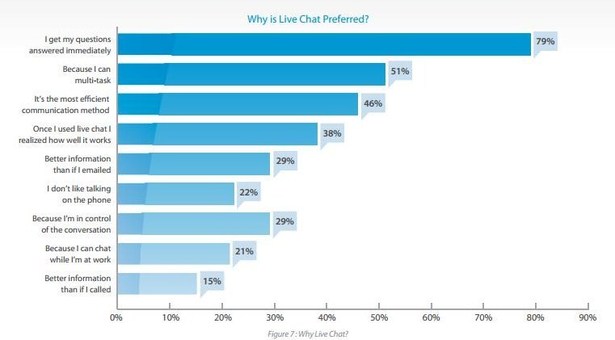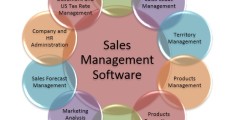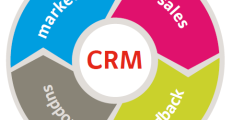Even as you scour your CRM database spanking clean for potential deals, and still fall short of your revenue target, prospects may be right in front of you, ignored, their interest allowed to wither away. Ironic, yes, but that what happens when you fail to use live chat as a sales tool.
Live chat is great in providing awesome support with its element of immediacy. An Econsultancy study found that 79% of consumers use live chat for getting answers fast.

Source: Econsultancy.com
But the reasons above are just as an opportunity, not just to provide answers, but open the path to conversions across the buying cycle: a cold visitor turns to a warm lead, a warm lead turns to a hot lead, which turns to a purchase. Yes, live chat is more than just a support channel, just as, overall, customer service today is more than just providing answers. It is a good lead source for opportunities, and when leveraged for sales, a profitable revenue tool.
This is possible with a live chat strategy and we’ll show you the techniques employed by brilliant marketers, for instance, how HubSpot got a $300,000 opportunity from live chat.
Consider this article a road map to turning your live chat (or start installing one) into a sales tool and, ultimately, a revenue-making machine.

1. Hook your sales reps first
Try shoving live chat down the throat of your sales reps and you have a leaky lead bucket in the making. Changing old habits is like drilling through hardened steel. You got to soften the steel first. So, too, when it comes to getting a sales rep on board your live chat program.
Give them solid motivation to embrace this new lead source. Solid, meaning, there may be a variety of sales motivational techniques, but go straight to what matters most to them: money in the bag. Gamify your live chat program and personalize it with rewards.
Even then, you as the marketing manager have to take up the cudgels first for the merits of live chat. That means being the live chat ambassador in your organization. Just like in any campaign, you have to define a clear goal, test metrics like bounce rate, lead conversion and show ownership.
Hard facts in your hands, you have solid proof to show sales what’s in it for them when they welcome live chat as a new lead source.
A note though, saying your sales team should embrace live chat takes a lot of process work. You need to build an accountability hierarchy and ownership. The major questions to resolve include:
- Who will be responsible for training, measurement and overall strategy?
- Who will qualify leads for support or sales?
- Who will get which leads?
For a small business, accountability may revolve around three persons only, but for large enterprises, this can mean close coordination between support and sales teams with plenty of cross-over functions.
2. Engage the right web visitor at the right time
Even as a prospect quietly checks your website out, live chat can be a powerful sales tool. Smart triggers help you to connect to web visitors right where they are at the buying stage. They can be interested, willing or ready to buy.
This is done via algorithmic rules, enabling a live chat message to pop up a custom message to the right web visitor. Say, John just got over with your free trial and is viewing your pricing page. The live chat recognizes his IP address from your free trial list and messages him the recommended next step, possibly linking him up to a sales rep right there. At the same time, Jane may be browsing the features page; a different message pops up offering her a deal to prod her into signing for a free trial.
How do these messages work? For that let’s take a look at HubSpot’s live chat, which is part of the HubSpot Sales platform (we recommend you sign up for a HubSpot Sales free trial here to help you see clearly how rules work in a live chat).
You can create a targeted message and choose an “audience” to match it with. The audience can be “everyone,” “anonymous visitors,” “tracked contacts” and “segmented lists,” lists you can sort by your own rules. The correct message is prompted when a match is found in real time.

The backend of HubSpot live chat messages: Customize the message, recipient and email capture and put the whole process in auto drive.
If your live chat lacks this feature you’ll end up chasing a lot of uninterested people. Such a waste of time. When you engage the right web visitor at the right buying stage, it’s easier to trigger a need in them, a sense of motivation that draws them a step closer to a purchase.
3. Use the need for context to capture customer data
Make no mistake, live chat is a support tool first and lead generation second. The main goal is to address the prospect’s issue before the pitch. But it doesn’t mean you can’t ask for customer data. In fact, you have a good alibi: the need for context the better to give an accurate answer.
Prospects have varying backgrounds and needs and, often, your answer depends on these factors. Someone may ask if your collaboration software, for example, can handle multiple projects. That may depend on project size and complexity. The question gives you an opening to capture a data point: “Yes, it has a multi-project feature, but may I ask the size of your organization?” If the prospect shrugs off your question with a non-committal answer, “I’m just browsing around,” you can follow up with another leading question: “Great, let me send you more detailed specs of the multiple project feature. Can I have your email address?” It’s like ping-pong, a give-and-take maneuver — give a bit of information take a data point. Generally, customers are willing to give their data if they know the purpose.
Top reasons why customers will share personal data

Source: www.247.ai.
Here’s one more thing: the use of context enables you to qualify the lead right there. The longer the prospect stays in the ping-pong game, so to speak, the more data points you capture and the more accurate you can pinpoint this prospect along the buying cycle.
4. Communicate value
Live chat is most effective with engaged prospects to prod them to take the next step towards conversion. But what of cold web visitors? Those who keep mum throughout their visit, the majority of your web visitors? You can still squeeze leads from this silent majority by communicating value in your prompt messages.
You can place subtle ad copy in the live chat window without interfering with the main message. We’re not talking about transforming the live chat into a banner ad, that’s just bad. Something as simple as this (cited by Neil Patel) makes a big difference:

Notice the main purpose is to answer questions before the pitch? But the pitch adds a layer of magnet for those without questions. Clever. Prospects with no issues warm up to the live chat knowing they can get a deal. Remember the chart above when customers are willing to give their personal data? Yes, to get a deal tops the reasons. Of course, there’s no point in asking if they need a deal when you can’t give one. Find something of value to prospects that you can offer and place that value on the live chat widget.
Communicating value also means projecting your branding. On this note, we come to the importance of customization in live chat app. It has to allow you to configure the look and feel of the chat window along your colors and key messaging. Live chat apps have gone a long way from embedding, bland generic chat windows. Today’s apps are highly customizable, not just tweaking the surface elements, but also implementing process rules. To give you an idea, take a look at this HubSpot live chat backend (you can get a better view when you sign up for an HubSpot Sales free trial here):

HubSpot live chat allows you to deep-customize the chat window including its messages and appearance, the features of our focus here. You can create, delete, toggle on/off and edit your message; that means you can communicate value on the chat window even on static (before someone clicks it).
5. Place the live chat on the right web pages
When you place a live chat on the right page you’re already qualifying leads. The locations where web visitors signal the strongest interest are: pricing page, free trial or demo landing page, contact us page and sales page. Also consider soft locations as homepage, product/features page and about us page.
You’ll also find it easy to sort the right message and even lace your conversations with an appropriate CTA where the chat window is placed. For instance, a visitor lingering one second too long on your free trial page can be prompted with a sales-centric CTA, perhaps, offering him a bonus if they click on a free trial link right there.
Here are some more examples where a properly placed live chat can be truly helpful in lead nurturing:
- Visitor lingers on your community page: Ask what he’s trying to search and provide a link to the right discussion thread.
- A visitor asks wherein the answer is complex: Send a link to a white paper or report download or article that addresses the query.
- A visitor watches your recorded webinar: Invite him to register for an upcoming webinar or event.
Conclusion
If you’re ready to use this channel for sales to increase revenues, you have plenty of live chat programs in the market today. Among these apps, we found HubSpot live chat an excellent choice, not only because it is highly customizable and has smart tools as we’ve pointed above; it’s also natively integrated to the HubSpot suite of CRM, sales and marketing automation. After all, live chat isn’t a standalone tool, but just one of the myriad revenue-making instruments at your disposal.
(You can easily check if this app is for you at no cost when you sign up for a HubSpot Sales free trial here).



























Leave a comment!